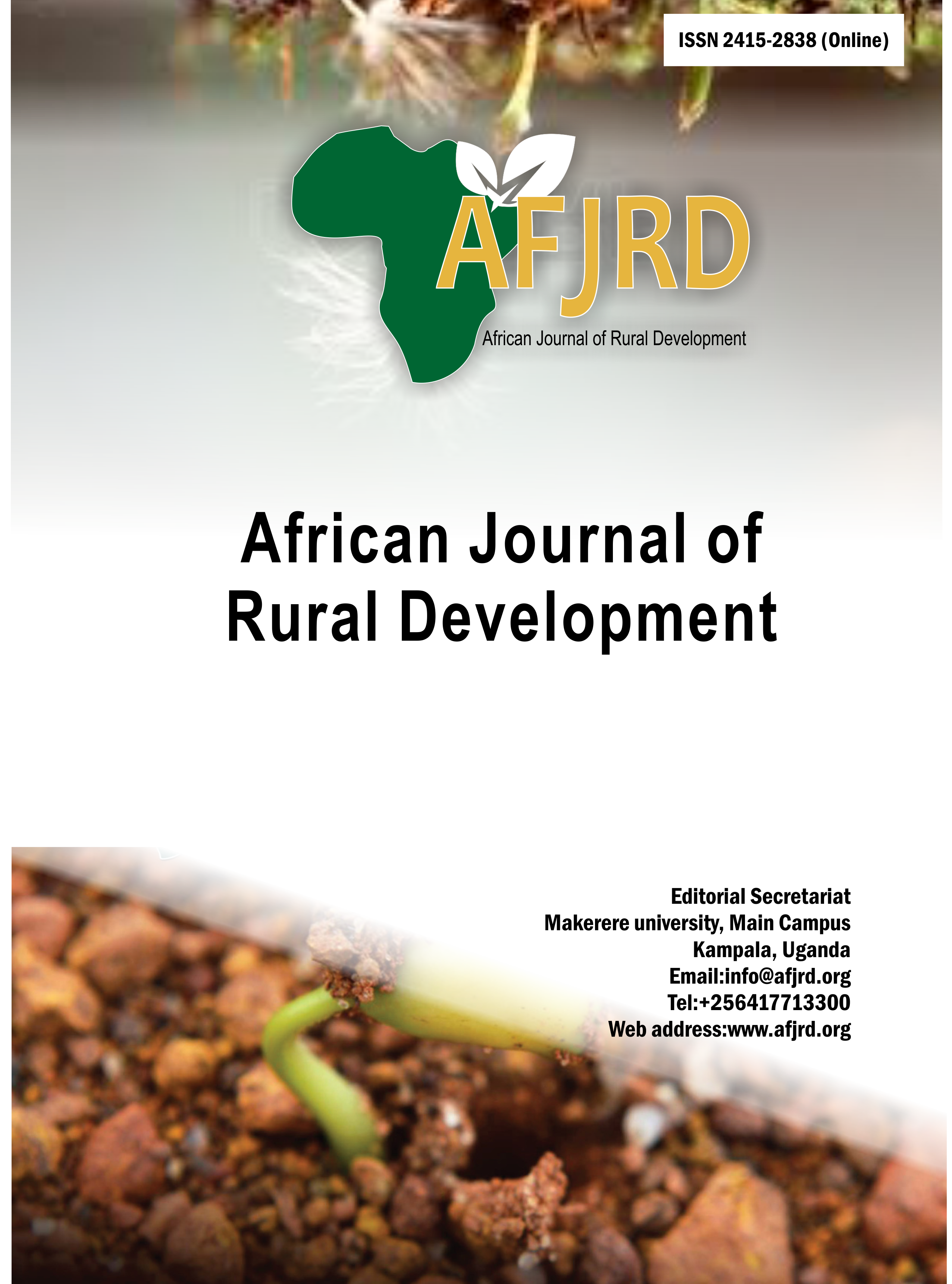Exploring livelihood opportunities in the Himalaya Mountains and case studies on enhancing Africa agrifood systems productivity
Main Article Content
Abstract
ABSTRACT
This Issue of African Journal of Rural Development (AFJRD), Vol 10 (Issue 1), presents six papers that address three themes: Livelihood opportunities in Uttarakhand Region of Himalaya, a mountainous region in Asia; enhancing productivity of Japanese Quals in Malawi and small-scale Diary in Eritrea; and enhancing productivity of agri-food systems through improved land use management and crop improvement. The Asian case study provides useful insights and indeed similar experiences to those of mountainous communities in several African countries that in fact call for adaptative management practices in light of climate change challenges. Livelihood opportunities highlighted include integrated agriculture and livestock farming, tourism services and other businesses The Eritrean study examined profitability of small-scale Diary farming and identified that feed including concentrates, labour and herd size were the key determinants of profitability. On the other hand, the study in Malawi showed that cassava could be used as substitute to maize meal in Qual feeds, up to 30% inclusion level. The Kenya study brings out the critical issue of water and soil management in especially semi-arid regions. Application of Farmyard manure in combination with fertilizer (Calcium Ammonia Nitrate) and tied ridges increased maize (study crop) yields significantly. The other two papers explored use of breeding to improve maize and cowpea productivity, two key food crops in Africa. The issues explored in the six papers are relevant to several farming communities across Africa and some of the recommendations could be explored further for enhancing productivity of agri-food systems in Africa.
Article Details

This work is licensed under a Creative Commons Attribution 4.0 International License.
